Text: Richard Saunders
Photos: Vision Int’l
Fine food, fascinating traditional Chinese culture, and outstanding natural beauty are three things for which Taiwan is justly renowned among visitors. These are perhaps the three biggest reasons why few places within easy reach of the capital city are quite as popular as the little villages of Jiufen, Jinguashi, and Shuinandong.
These quaint settlements, seemingly locked in a time warp, are atmospheric open-air museums highlighting one of Taiwan’s most fascinating eras. Factor in an outstanding setting – clinging to the steep slopes of a cluster of extinct volcanoes overlooking a wide sweep of the Pacific Ocean – and marvelous old teahouses and restaurants, and a visit to the area makes for one of the most interesting and scenic days possible exploring north Taiwan.
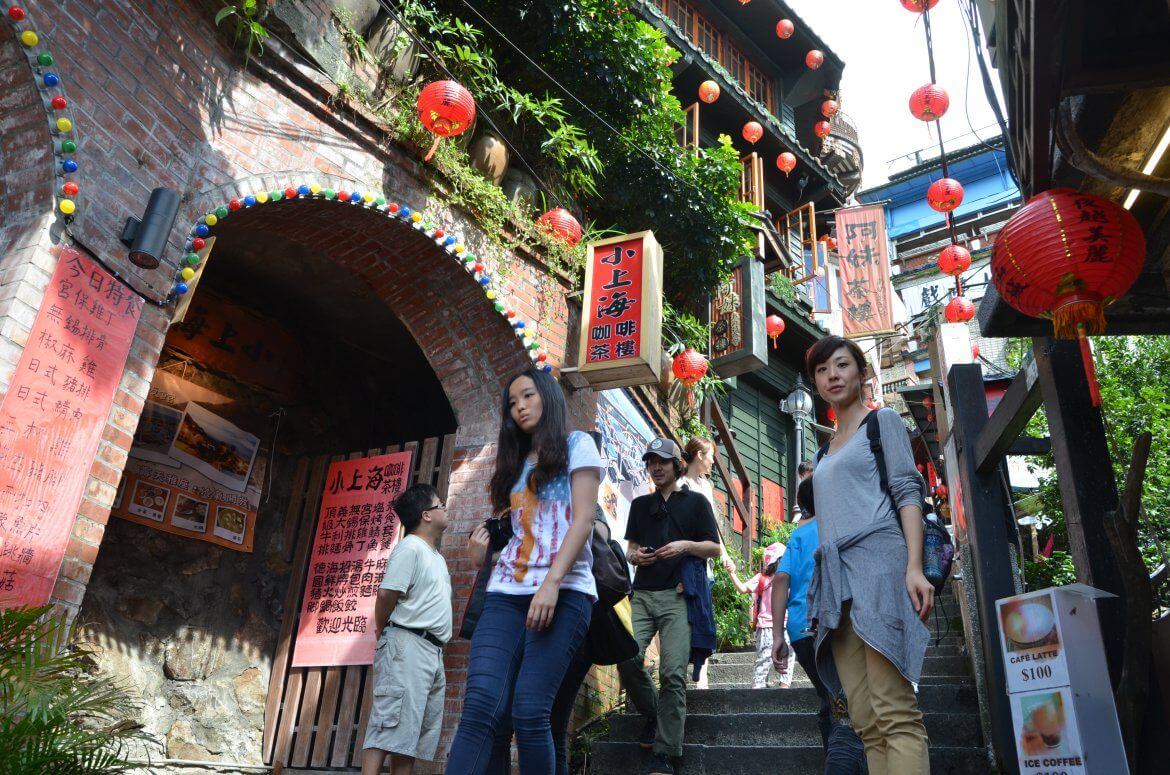
Jiufen (九份) owes its existence to gold (which was discovered in the hills behind the village in the late 19th century), and later to copper. The area around Jiufen and neighboring Jinguashi was discovered to hold one of east Asia’s richest sources of precious metals, and there was a huge influx of islanders to work the mines, which gave the area such prosperity that Jiufen became known as “Little Shanghai.” It boasted bars, a movie theater, and even performances of Chinese opera. It’s estimated that the two villages attracted over 100,000 workers during the 1920s. (Read also: We Never Made it to Jiufen)
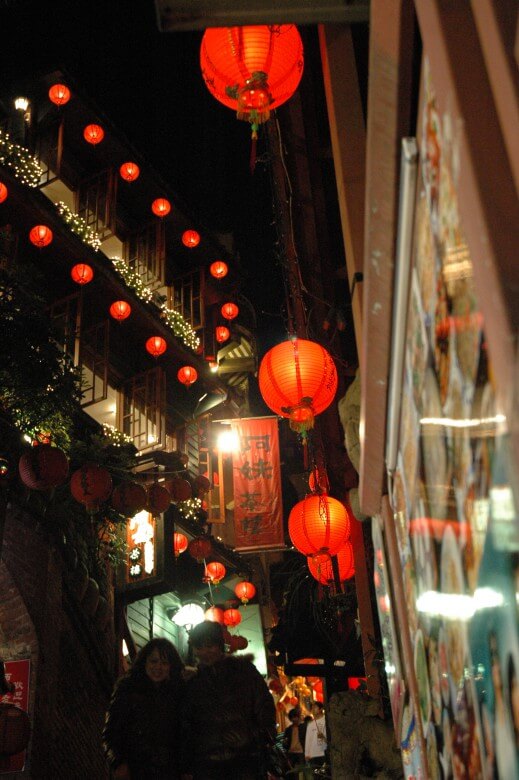
Although the last ore was extracted in the 1980s, there’s still plenty to remind the visitor of the area’s mining heyday, including the atmospheric entrance to Number Eight Mine, (八番坑) a popular place for shooting TV or movie scenes, below the main road near the visitor center. Higher up, off Qingbian Road, one of the main (pedestrian-only) drags through the village, Number Five Mine (五番坑) is today home to a colony of bats. A couple of minutes down the road from the mine entrance is Sky Castle Teahouse (天空之城), one of Jiufen’s most famous, in one of its finest remaining old red-brick residences.

Jishan Street (基山街) is contoured to the hillside a couple of minutes up the steps from the visitor center, and affords some fine views over the village section below, the steep coastal slope, and the ocean beyond. The alley-like road is lined with shops and eateries selling an extraordinary selection of edible treats. Especially famous are Mother Lai’s Taro Balls (賴阿婆芋圓), at number 143, one of the best of many places that sell this, Jiufen’s signature snack, which is made with powdered taro (a potato-like vegetable). Perhaps the most famous establishment along the street is at number 142: the famous Jioufen Teahouse (九份茶坊), occupying an atmospheric old residence. Sitting down for a pot of Chinese tea and perhaps a light lunch while admiring the magnificent view is an essential part of the Jiufen experience, and there’s no more authentic place to enjoy it than here.
While Jiufen, sitting high on a hillside, has perhaps the best setting and the most popular teahouses, Jinguashi (金瓜石), in a valley on the south side of Mt. Keelung is the best place to find out what got the whole gold and copper mining era here started, well over a century ago. The Gold Ecological Park (黃金博物園區), which opened in 2004, has turned Jiufen’s once almost forgotten twin into a hugely popular tourist attraction. The park is centered on Jinguashi village, a place of narrow alleys lined with quaint old houses that are themselves well worth exploring. (Read more: Remembering Taiwan’s Kinkaseki POW Camp on Tomb Sweeping Day)
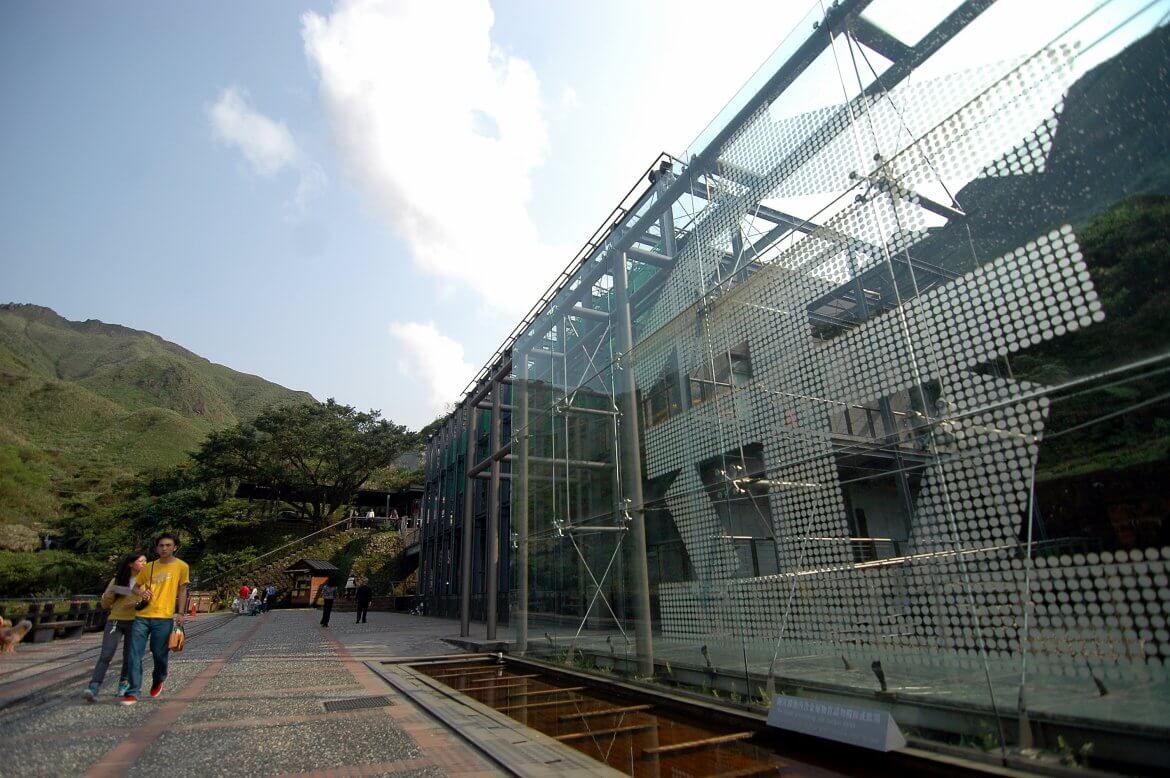
There’s lots here to see and do, but if time is short, be sure at least to visit the elegant Crown Prince Chalet (太子賓館), built in 1922 for the visit to Taiwan of Crown Prince Hirohito two years later, though in the end, the crown prince did not stay here. Set in pretty gardens, the interior isn’t open to the public, but some of the beautiful rooms are clearly visible through the glass windows. Look for the beautiful Mount Fuji design above the main entrance. Round the back of the chalet is a concrete mini-golf course and an archery range, intended for use by the royal visitor!
Climb the steps beside the chalet and turn left at the top onto the wooden platform that supported the tracks of a narrow-gauge push-cart railway, once used to transport ore and minerals. A few minutes’ walk along the tracks is the Museum of Gold (黃金博物館), which recounts (on two floors, with English translations) the history of gold and gold mining both here in Taiwan and elsewhere around the world. The undisputed highlight of the small museum is the huge 220-kilogram ingot of 99.9% pure gold on the second floor, which visitors can touch. (Read more: Jiufen and Jinguashi: Taiwan’s Golden Getaways)
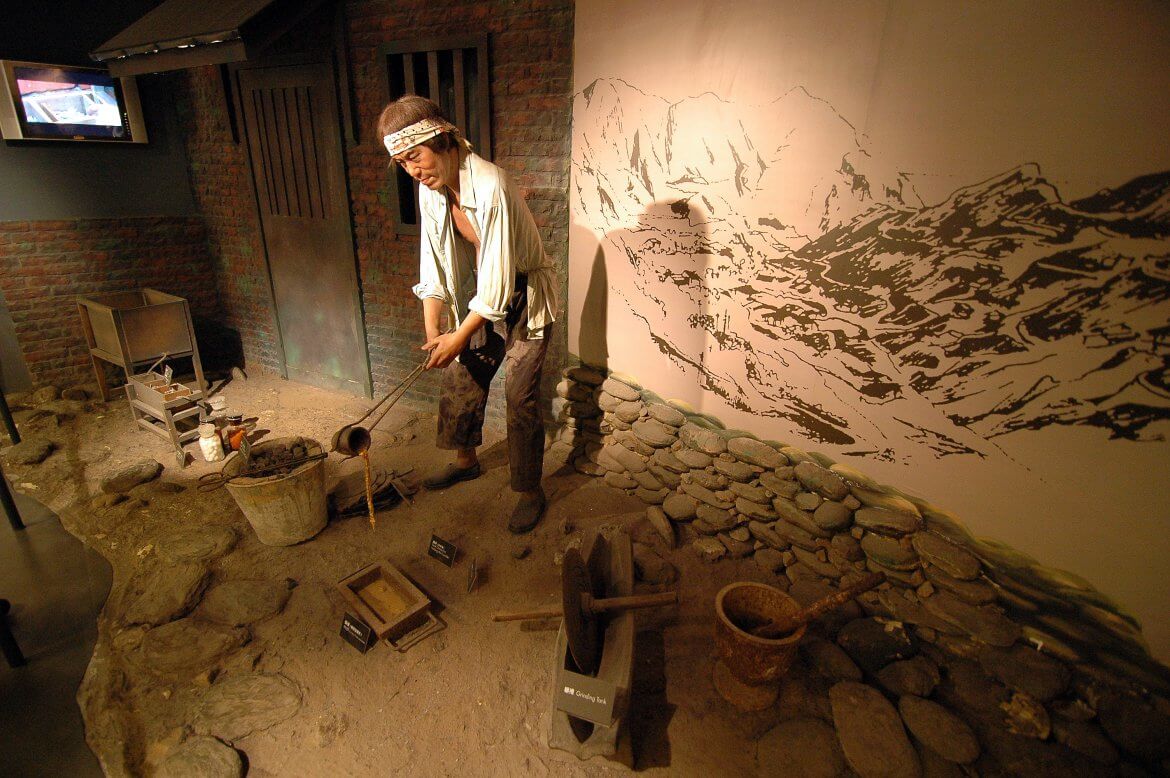
After visiting the museum, if energy allows, make the short but stiff climb up the wide, stepped path behind the museum to the photogenic ruins of the Golden Shinto Shrine (黃金神社). Two torii (Japanese ceremonial gates), pillars, and stone foundations are all that remain today of the temple, built by the Japan Mining Company in 1933, which is dedicated to the three Kami spirits of metallurgy, but it’s worth clambering up there if only to admire the breathtaking view.
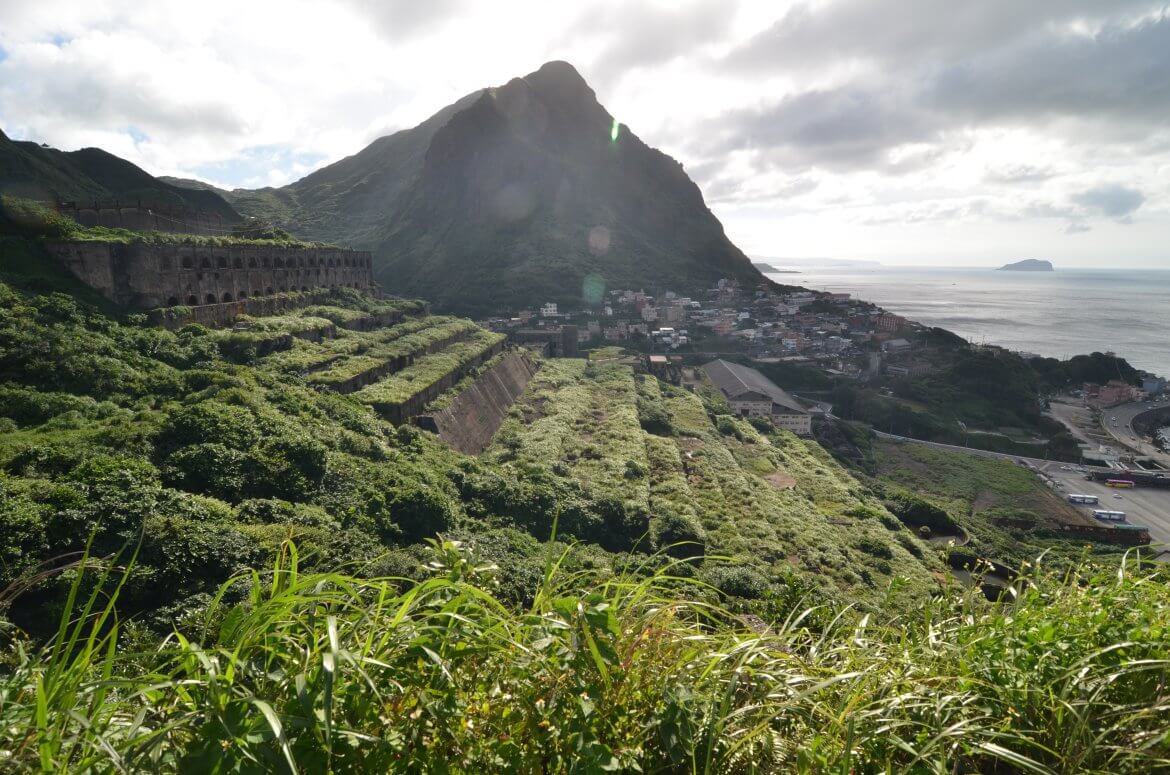
Jinguashi is just a short distance from Jiufen. Regular buses link the two villages and, further down the winding road toward the coast past Jinguashi, the small settlement of Shuinandong (水湳洞). This village is dominated by one of the area’s most impressive industrial relics, the Thirteen Levels (十三層) building (built in 1933), which was once used for refining copper. From the massive building hulk high up on the mountain slope you have splendid views of the coast. Close by is also the extraordinary Golden Waterfall (黃金瀑布), a series of small cascades plunging over a tufa dam built up from minerals dissolved in the water. Some of these minerals have stained the rock a bright sulfur-yellow, hence the name. It’s a favorite spot for photographers and a great place for a break on a tour of the Jiufen/Jinguashi/Shuinandong triumvirate – a truly remarkable group of villages.
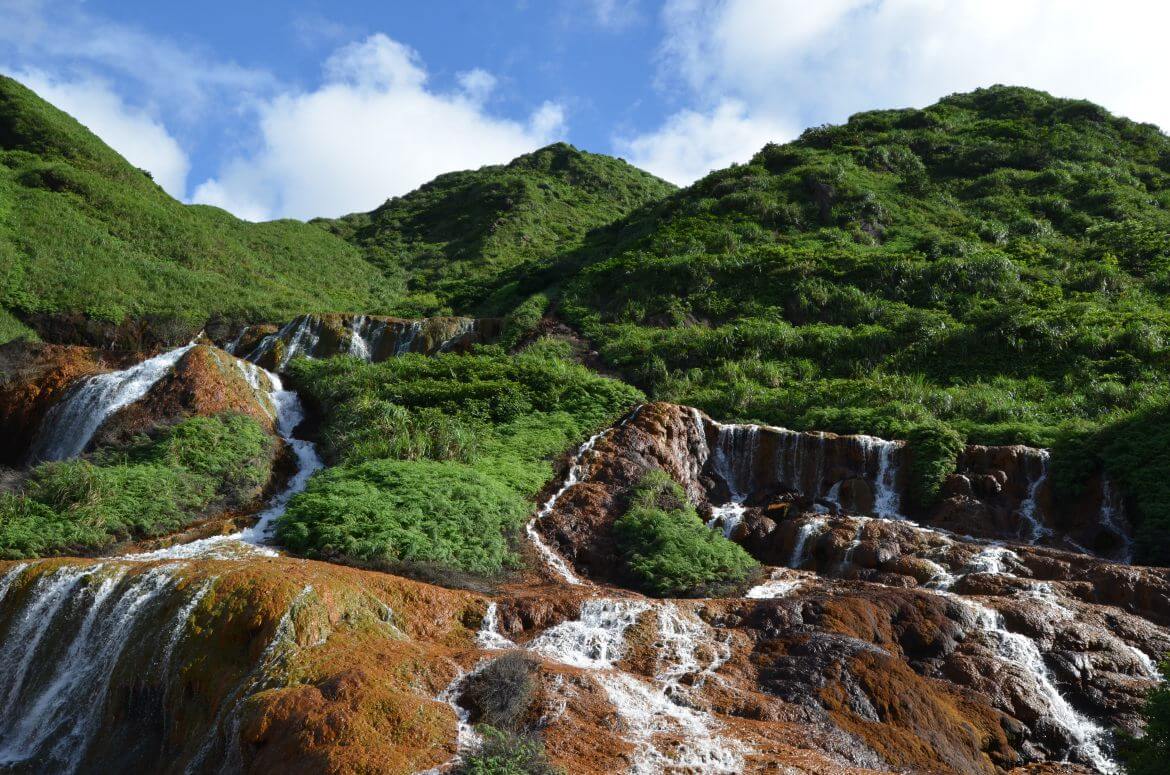
Visit the charming mountain towns of Jiufen and Jinguashi by joining the Jiufen and Pingxi Tour
This article was published in Travel in Taiwan magazine (Jan./Feb., 2013)
You may also be interested: Waterfalls and Sky Lanterns: A day tour to Shifen and Pingxi

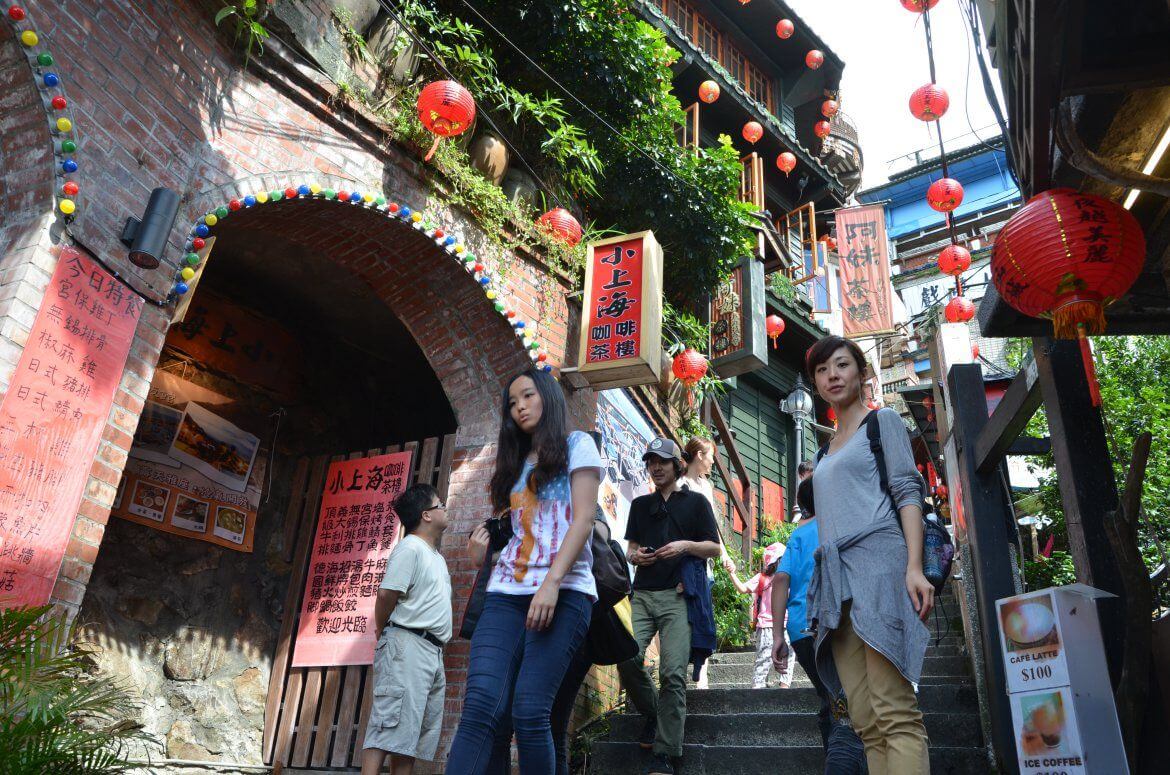
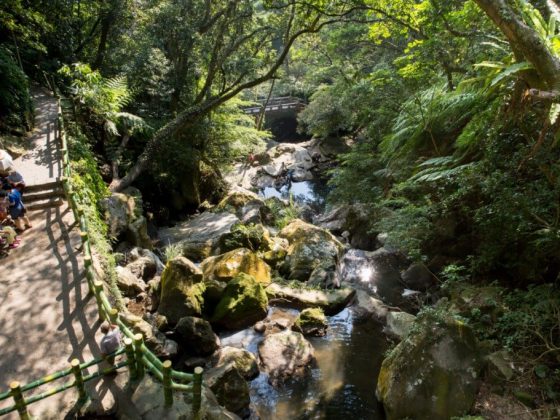
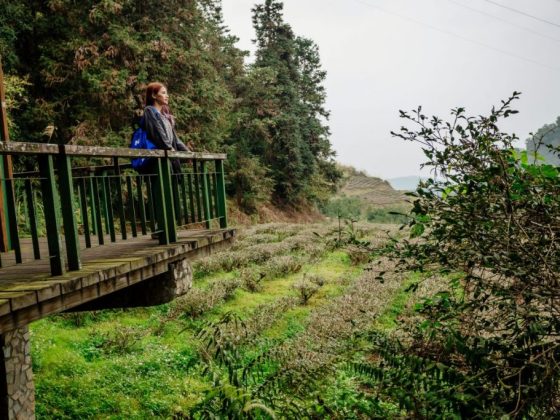









Comments are closed.